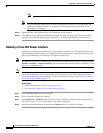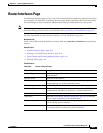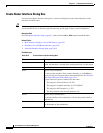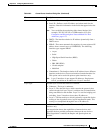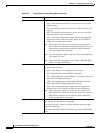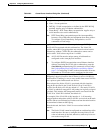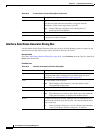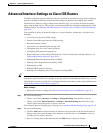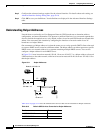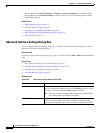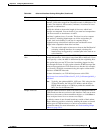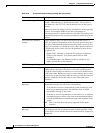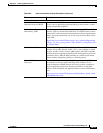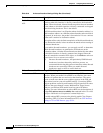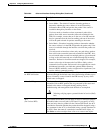
59-14
User Guide for Cisco Security Manager 4.4
OL-28826-01
Chapter 59 Configuring Router Interfaces
Advanced Interface Settings on Cisco IOS Routers
Step 3 Configure the advanced settings required for the selected interface. For details about each setting, see
Advanced Interface Settings Dialog Box, page 59-16.
Step 4 Click OK to save your definitions. Your definitions are displayed in the Advanced Interface Settings
table.
Understanding Helper Addresses
Network hosts occasionally use User Datagram Protocol (UDP) broadcasts to determine address,
configuration, and name information. This presents a problem if the host is on a network segment that
does not include the required server, as by default, routers do not forward UDP broadcasts beyond their
subnet. You can remedy this situation by configuring the interface to forward certain classes of
broadcasts to a helper address.
One common use of helper addresses is when the router acts as a relay agent for DHCP clients who need
to contact a DHCP server located on a different subnet. The helper address can either represent a specific
DHCP server or a network address for a segment containing multiple DHCP servers. You can also
configure a helper address for each DHCP server.
In Figure 59-1, hosts located on network 192.168.1.0 can use 10.44.23.7 as a helper address to forward
UDP broadcasts to the other network, while hosts located on network 10.44.0.0 can use 192.168.1.19 as
their helper address.
Figure 59-1 Helper Addresses
Table 59-5 on page 59-14 lists the default UDP services that can be forwarded to helper addresses.
180759
Server
10.44.23.7
Server
192.168.1.19
Network 192.168.1.0
Network 10.44.0.0
E2
E1
Table 59-5 Default UDP Services Forwarded to Helper Addresses
Service Port
BOOTP/DHCP Client 68
BOOTP/DHCP Server 67



